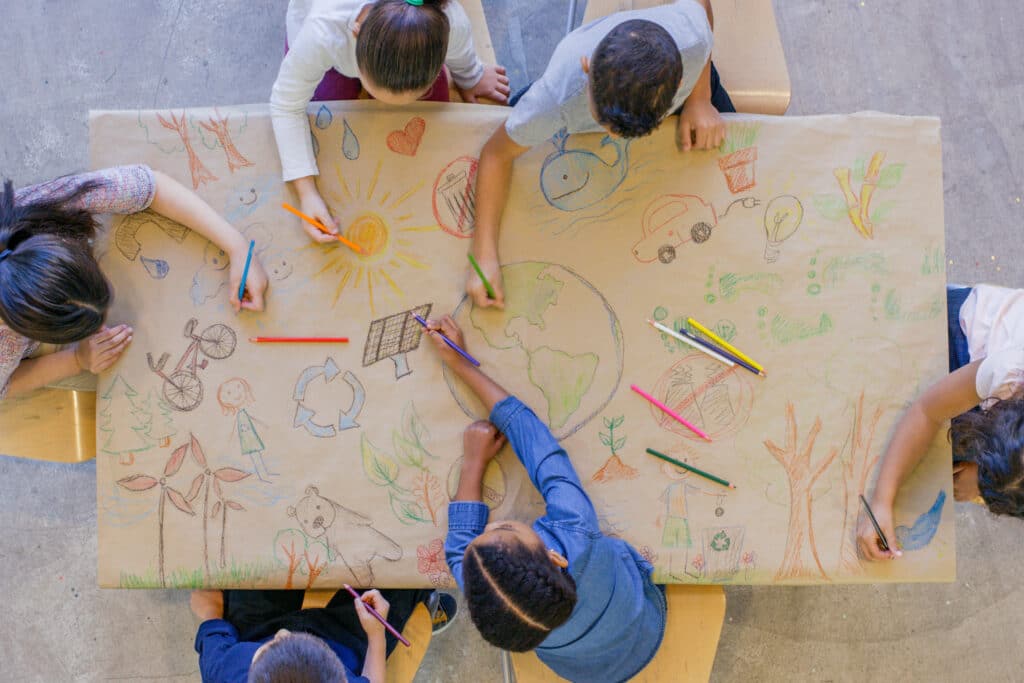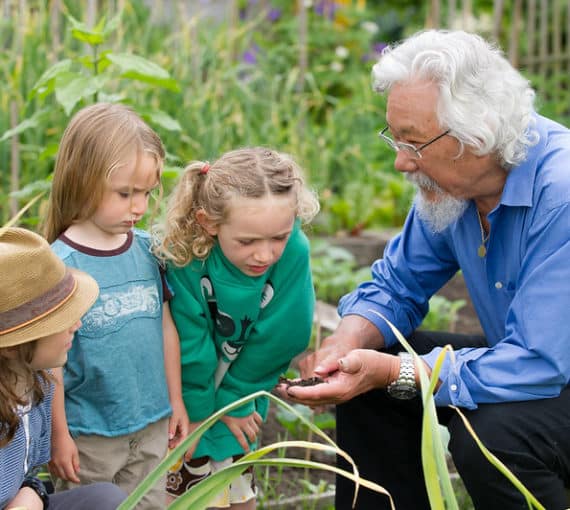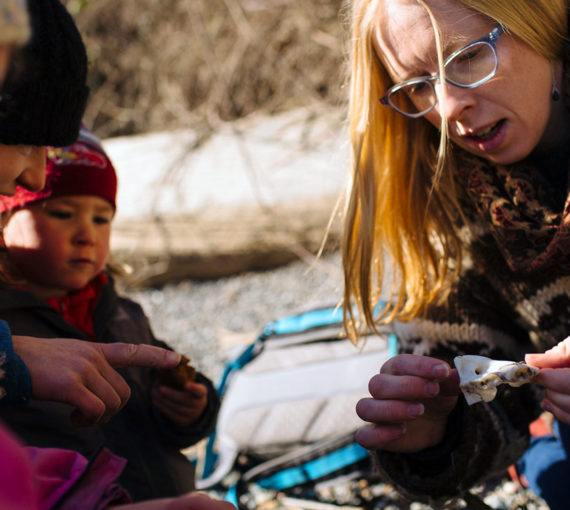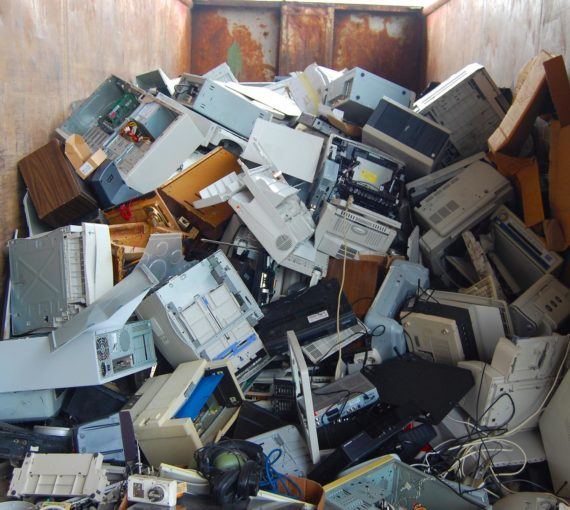
Teachers, parents and students of all ages can make it a green back-to-school season.
Anyone in your life getting ready for the classroom? (Maybe it’s you!) Then this is a great opportunity to adopt new green back-to-school habits. As parents, teachers and students of all ages shop for clothing, electronics, food and supplies, frenzied consumerism can run up costly bills and lead to unnecessary waste.
It doesn’t have to be that way!
Use these Earth-friendly solutions to create your green back-to-school list. It’ll help you have a positive impact on the planet, inside and outside the classroom, all year long. And it will instill important values in others, including the next generation. Peers learn from each other!
School supply waste
People often associate the beginning of a school year with new supplies, gear and wardrobe. A Deloitte Consulting study found that families in Canada spend an average of $570 per student on back-to-school shopping.
When the academic year ends, school-related waste increases, as teachers, students and households dispose of used and (too often) unused supplies such as notepads, pens, backpacks, binders and paper.
Talk to the people in your life (including kids, if appropriate) about climate change and how cool it is to care about nature. Making green back-to-school choices will help lessen the burden on the planet and your wallet.
Green back-to-school basics
Students often get a list of what they’ll need from school. Before shopping, take an inventory of what you already have and can reuse. Note what you’ve got on hand or left over from last term so you don’t buy unnecessary new items.
You don’t have to get everything right away. Put off buying or sourcing stuff that can wait until it’s truly needed.
Give “old” supplies new life! Decorate binders and notebooks with non-toxic paint or stickers you have around. Or let creativity bloom: make personalizing gear a student-led green back-to-school project.
Supplies
School supplies are a non-negotiable need for most students. Many manufacturers and retailers know people want a green back-to-school season and provide eco-friendly alternatives — but read packages carefully and be wary of greenwashing!
Remember: Before you buy new, check local thrift stores or online marketplaces for second-hand supplies.
- Recycled paper products. Help save trees and energy by reducing demand for new paper products. Choose notebooks, loose-leaf paper and sketchbooks made from recycled materials.
- Refillable pens and pencils. Help reduce waste. Choose refillable pens and mechanical pencils that let you replace the ink or lead when it runs out.
- Plantable pencils. Get supplies that bring new life. Plantable pencils have ends with embedded seeds. Once the pencil is too short to use, stick that end in soil and watch herbs or flowers grow.
- Biodegradable or recycled plastic rulers. Save trees and reduce plastic waste. Get rulers made from recycled plastic or compostable materials such as bamboo or starch.
- Non-toxic glue. Prioritize safety for people and the planet. Choose non-toxic and/or water-based glues instead of those containing harmful chemicals.
- Eco-friendly backpacks. If someone must have a new backpack, opt for one made from eco-friendly material such as organic cotton, hemp or recycled polyester. Look for brands that prioritize fair labour practices too.
- Plant-based crayons, markers and paint. You’ll be surprised at what popular colouring products contain! Look for art supplies made from plant waxes, vegetables, seeds and flowers instead of paraffin (from petroleum) and animal-based ingredients.
- Energy-efficient calculators. Go renewable — opt for solar-powered calculators to minimize battery waste. If you already have a battery-run calculator, get rechargeables and a charger.
- Reusable dry-erase boards. Instead of disposable paper, use reusable dry-erase boards for taking notes and quick sketches.
- Recycled readings and textbooks. Look for used mandatory reading materials online or at second-hand bookstores. Ask older siblings, friends, neighbours and classmates for hand-me-downs.
- Donate what you don’t need. Get supplies into the hands of people who can use them now or next term.

How to get kids into nature
Kids who experience nature’s mystery and beauty will grow up caring about protecting it. Most children are curious explorers, so you don’t need to do much to cultivate their nature connection — just take them outside (whatever the weather) and get out of their way!
Wardrobe
Kids grow and wear through clothes fast. Fashion trends (that can change even faster) influence students of all ages. Instead of buying a whole new wardrobe, prioritize green back-to-school attire.
First, repair what you can. Donate what you can’t use or don’t want.
For items that need replacing:
- Go thrifting or shop used from online marketplaces.
- Seek second-hand uniform programs. If your school mandates uniforms, ask about outgrown clothes programs from older and/or graduated students.
- Ask friends and family for hand-me-downs.
- Host a clothing swap.
- Choose good quality, well-made clothing.
Tech
Owning a cellphone or computer is no longer a luxury in many circumstances, but a necessity for accessing information and services. School is no exception. Technology requirements are frequently mandatory for students. The COVID-19 pandemic reinforced this; when educators and students shifted to online classes, it completely changed teaching and learning.
Buying technology is not accessible or affordable for everyone. Some schools loan mandatory devices to students during the school year, but not all.
If school requires a computer or tablet, look for a second-hand or refurbished device. Extend its life by using high-quality protective equipment such as cases and screen covers. (This is especially useful in busy, messy and unpredictable school environments.) When your device reaches the end of its life, recycle your e-waste appropriately.
Food
Mindfully choosing what you put in your body is one of the easiest ways to make a positive difference for the planet. Packing green back-to-school lunches is a great way to live your values.
- Use reusable water bottles and lunch containers. Ditch single-use plastic bottles, containers and bags. Use durable, reusable stainless-steel, metal or BPA-free plastic bottles and containers that reduce the need for disposable packaging.
- Work school lunches into meal planning. Involve the whole household (kids included!) and make it a fun activity to do together. Get leftovers into school lunches and snacks to curb food waste.
- Prioritize plant-based meals. Even going vegan or vegetarian one day a week can make a positive difference.
- Avoid single-serving snack packages. They may be convenient, but plastic waste adds up. Try making your own snacks, like granola bars. They’re often cheaper and more nutritious!
- Compost food waste. If the school doesn’t have composting, put an empty container or jar with a secure lid in the lunch bag to bring food waste home.
- Grow your own fruits and veggies. Too many kids think food originates at the grocery store. Grow a young farmer!
Besides being better for people and the planet, green back-to-school behaviours ripple out to others, including younger generations, friends, teachers, neighbours and other families. That’s an important first step. Do what you can, with what you have — it’ll go a lot further than you might think!



